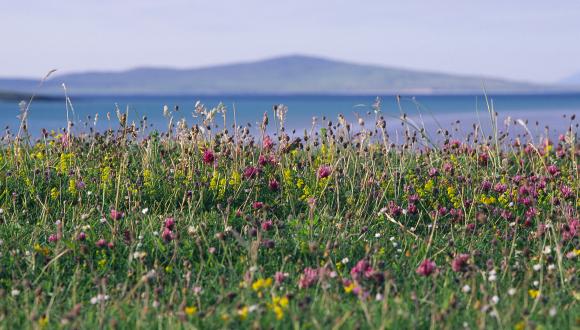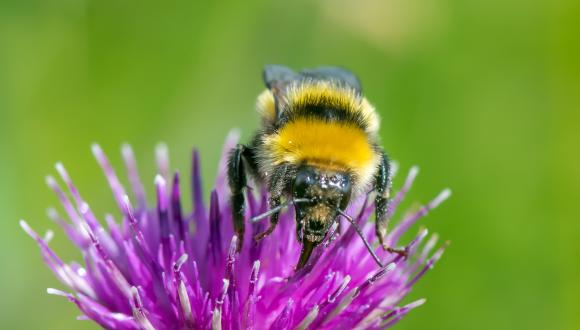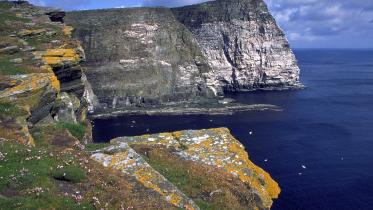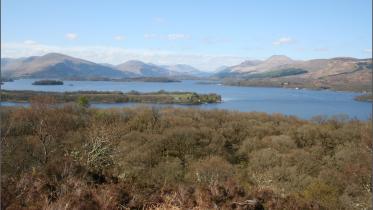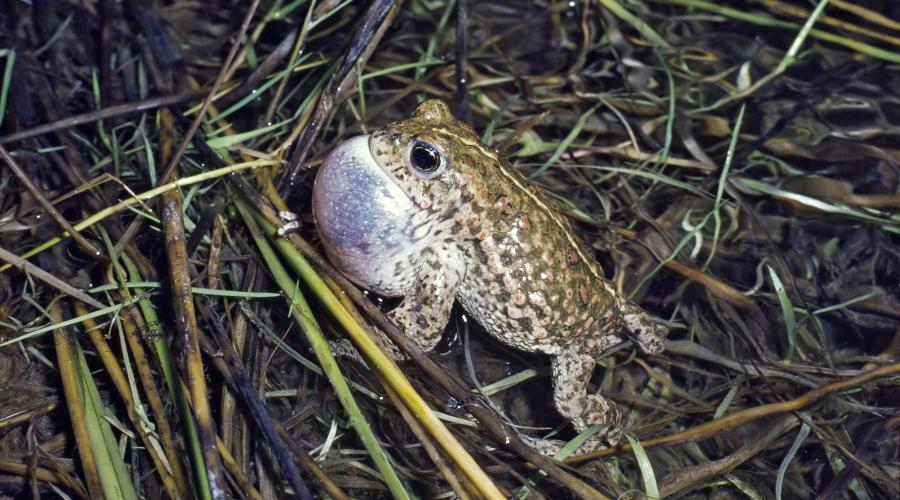
New multi-species conservation programme arrives on the Solway coast
28 June 2023
Species on the Edge partnership news release
An innovative and ambitious multi-species conservation programme, Species on the Edge, will kick off activity on the Solway coast on 6 July with a ‘nocturnal safari’.
Species on the Edge is a partnership programme of NatureScot and seven conservation charities, all dedicated to improving the fortunes of 37 priority species found along Scotland's coast and islands. The programme celebrated its national launch at Logie Quary, near Tain, earlier this month.
Two Species on the Edge project officers will be based on the Solway coast in Dumfries and Galloway for the duration of the four-and-a-half-year project, working closely with landowners and local communities to help conserve their local species.
With over £6 million of funding, including £4 million from the National Lottery Heritage Fund, together the Species on the Edge partner organisations will deliver a programme of conservation activity to tackle the impacts of environmental change on wildlife, to benefit both nature and people.
To celebrate the launch of the programme on the Solway coast, Species on the Edge will be running a free ‘Nocturnal Safari’ at RSPB Mersehead nature reserve on Thursday 6 July from 8:30pm. The evening will begin with a brief overview of the programme and its planned activity on the Solway coast, followed by a tour of a range of diverse habitats that support iconic species such as the natterjack toad, tadpole shrimp, farmland waders, and bats. There will also be the opportunity to use to use specialist acoustic monitoring equipment such as bat detectors to listen to the incredible ultrasonic echolocation calls of bats. For information on how to book a place on the event, visit the ARC website, or email [email protected].
The Species on the Edge partnership consists of:
- Amphibian and Reptile Conservation
- The Bat Conservation Trust
- Buglife
- Bumblebee Conservation Trust
- Butterfly Conservation
- NatureScot
- Plantlife
- RSPB Scotland
Programme activity is spread across seven coastal and island areas in Scotland: Shetland; North Coast; East Coast; the Inner Hebrides and Argyll; the Outer Hebrides; Orkney; and Solway.
Dumfries and Galloway’s coastline has a diverse array of habitats stretching from the Merse (salt marsh) and sand banks of the Inner Solway, to the shallow open seas and sea cliffs of the Outer Solway, all the way to the Rhinns coastline that leads into the sea loch of Loch Ryan. These habitats support a rich and varied diversity of wildlife. Unfortunately, species are facing threats from habitat loss, climate change, and changes to land management.
The Species on the Edge Solway team will be working with local communities to safeguard a range of species including: natterjack toad, Greenland white-fronted goose, red-billed chough, northern brown argus butterfly, tadpole shrimp, as well as terns, bats, and farmland waders. Project activities on the Solway will include species monitoring, habitat restoration, education and outreach events, volunteering opportunities, and training workshops.
Liam Templeton, Species on the Edge Project Officer from Amphibian and Reptile Conservation, is working closely on natterjack toads, Scotland’s rarest amphibian. Liam said: “Natterjack toads were once locally abundant along the eastern Solway. Some local residents have even commented that chorusing males in spring made it feel like they were living in a tropical rainforest. Their numbers have declined dramatically over the last few decades due to changes in land use in combination with natural processes such as drought and sea-level rise. Species on the Edge is a fantastic opportunity to empower members of the community to play an active role in restoring this iconic species to its former glory and once again filling the summer air with its rapturous midnight croaking.”
Species on the Edge Project Officer from RSPB Scotland, Jack Barton, has already been busy meeting with landowners and conducting field surveys along the Solway coast. Jack said: “Agriculture is a major industry in Dumfries and Galloway and the Solway coast has a diverse pastoral landscape. As is the case across Scotland, the farmed landscape is undergoing constant change as farming practices evolve to become more efficient and to meet new economic demands. These changes can pose a threat to species such as curlew and lapwing, which have both declined catastrophically in recent decades. Species on the Edge offers an exciting chance to work with local land managers and communities to support local biodiversity.”
Cathryn Baillie, Species on the Edge Project Officer from Bat Conservation Trust, said: “There is a lot of work still to be done in terms of monitoring and understanding bat populations in Scotland, but the Solway coast is one of the best places to encounter bats, with eight of our nine species found here, and only a stone’s throw from Scotland’s first bat reserve at Threave Estate!”
Perhaps the most unusual of the Solway species is the tadpole shrimp. The tadpole shrimp is often described as a ‘living fossil’; in evolutionary terms it is believed to be the oldest surviving animal species in the world, having gone almost unchanged for 220 million years. The UK population is restricted to just 2 sites: the New Forest in Hampshire, and Caerlaverock on the Solway coast. Buglife, one of the programme’s partners, is working on a captive breeding and translocation programme to return the tadpole shrimp to former sites, giving the future survival of the species a stronger chance.
For more information about Species on the Edge and how to get involved, visit their website, join their mailing list, and follow the programme on Twitter and Facebook.
